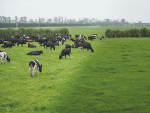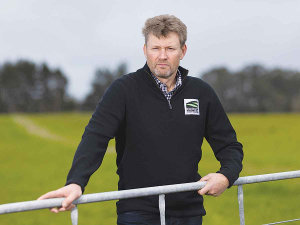WHILE CHINA is widely touted as a bonanza for Australian dairy exports, another massive market even closer remains largely overlooked. Indonesia is emerging as the next big thing for dairy exporters.
It has grown solidly for ten years and now industry experts believe they are seeing only the tip of the iceberg. Australia exported 44,000 tonnes of dairy products to Indonesia in the 2013-14 financial year, worth US$202 million.
A new Indonesia market brief produced by Dairy Australia analyst Amy Bellhouse says the country is Australia’s fourth largest market in volume and value. “Indonesia is a rapidly urbanising economy with an increasing demand for Western-style and convenience foods.”
Commercial research and analysis manager for Dairy Australia, Norman Repacholi, ranks Indonesia as one of the best markets available to Australia in the broader Asian region, “a massive market with plenty of potential that will grow over the next 10-15 years.”
In fact, Australian dairy farmers aren’t producing enough to meet the possible demands. “Its potential can probably grow more than Australian milk production can grow in the short term,” Repacholi says.
He agrees Indonesia has been overshadowed by the booming Chinese market, but it could find more prominence with the recent slight cooling of demand in China.
“China understandably gets all the attention because it is such a large and rapidly growing market, but there are plenty of other opportunities in Asia, and in Vietnam and other South East Asian countries.
“We’ve got reasonable access to the market at the moment and that will likely improve because they have a reformist government and part of their platform is improving access.”
Repacholi says Indonesia demands a range of products and Australia’s “clean, green reputation” puts it in a good place to capitalise.
“The fresh dairy products Australia has been exporting to other markets are also quite desirable in Indonesia, including liquid milk, UHT, extended shelf life milks, plus milk powders like whey nutritional powders, bulk ingredients used for the industrial market, and formula powders for manufacturing operations.”
Import rules and Halal certification bears on business in Indonesia, but these were not insurmountable.
“Products that we make are acceptable in their quality and flavour profile and Australia has a good reputation in its safety record and the type of milk it produces.
“We already do some business there. In any South East Asian nation it’s good to have a local distribution partner and to investigate the opportunities and work out if they suit your business.”
Repacholi sees potential for more live heifer exports to several South East Asian markets which aspire to self-sufficiency. “They’re looking for breeding stock and expertise.”
The Indonesia market brief says dairy exports from Australia to Indonesia have increased by 8% over the past five years in volume terms but a massive 70% in value terms. The biggest growth in export volume was skim milk powder (56%) and whey powder (21%). Exports of whole milk powder, cheese and butter have declined.
Global dairy imports to Indonesia have increased by 16% in the past five years. Annual per capita consumption of fluid milk has increased from 1.32kg to 1.45kg in 2000-2012 and continued growth is expected.
“Demand for dairy products in Indonesia is expected to continue growing faster than production, creating growth opportunities for Australia due to our relatively short shipping times and low freight rates,” the report states. “However demographics make Indonesia a target market for all major exporters.”
The ASEAN - Australia – New Zealand Free Trade Agreement will eliminate tariffs on 96% of Australia’s current exports to ASEAN nations by 2020.
Dairy Australia is holding seminars with key South East Asian markets, hosting several inbound mission programmes, and has launched a scholarship scheme with the Victorian Department of Environment and Primary Industries that will bring up to 15 dairy leaders a year from the South-East Asian region to study dairy production and manufacturing in Australia.


















